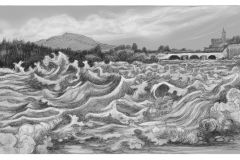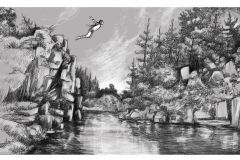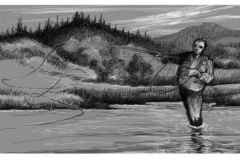The origins of April Fool's Day
The origins of April Fool's Day are uncertain, and several theories exist to explain the tradition. Here are some of the most common hypotheses:
A change of calendar
The most popular theory dates back to 1564, when King Charles IX of France decided to fix the beginning of the year on January 1, in accordance with the Edict of Roussillon. Previously, the year began at the end of March or on April 1. Those who continued to celebrate the New Year in April were often mocked and pranked, notably by receiving false gifts. This tradition of mockery evolved into jokes and April Fools' Day fish hung on people's backs.
The symbolism of fish
The fish has become a symbol of this tradition, particularly in France, where it's common practice to stick a paper fish on someone's back without them noticing. The fish symbolizes naivety and the ease with which you can be caught - fishermen who have trouble catching fish will appreciate this...

Another hypothesis suggests that fish is linked to Lent, a period during which Christians favored fish as a lean food.
There are also theories that the opening of the fishing season in April may be behind the association of the fish with this date.

Other theories associate April Fool's Day with astrological practices or pagan celebrations linked to spring renewal.
Old traditions
Similar traditions of pranks exist in several cultures, dating back to antiquity, suggesting that April Fool's Day may have very ancient roots. These different theories show that the origin of April Fool's Day is complex and multifaceted, reflecting various cultural and historical aspects.
April Fool's Day today
Many media outlets and companies take part in this tradition by publishing articles or outlandish advertisements. These hoaxes are often revealed as jokes at the end of the day. People take advantage of this day to make light-hearted, harmless jokes. These can range from simple jokes to more elaborate theatrics. Above all, April Fool's Day is a day of relaxation and laughter, an opportunity to enjoy yourself and share fun moments with loved ones.
In Scotland, the April Fool's Day tradition lasts two days, and each day is devoted to different types of prank. Similar stuffing traditions exist in many cultures, dating back to ancient times.

April Fool's Day is a playful tradition that celebrates humor and lightness, while reminding us of the importance of not always taking things too seriously. It's a day to laugh and have fun, sharing moments of complicity with loved ones.









